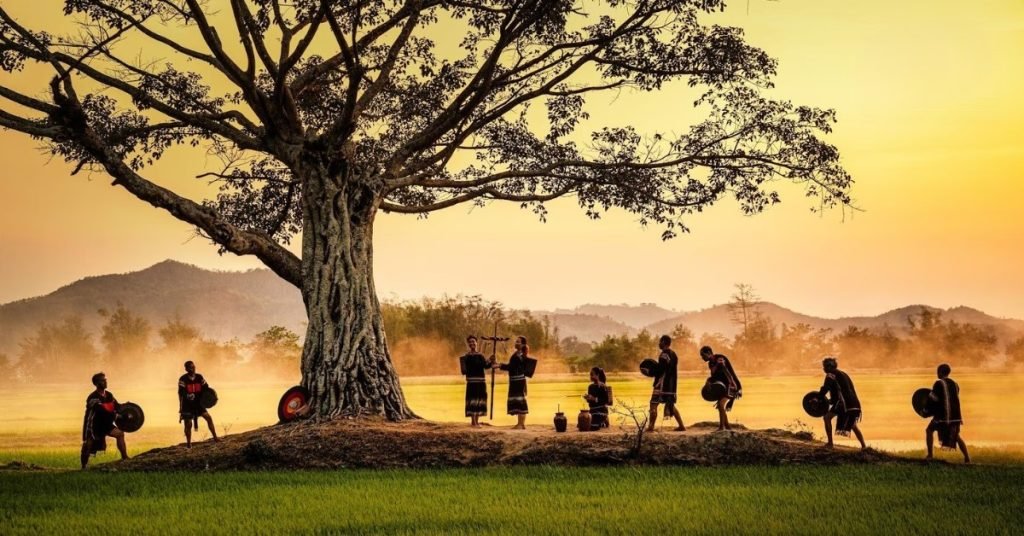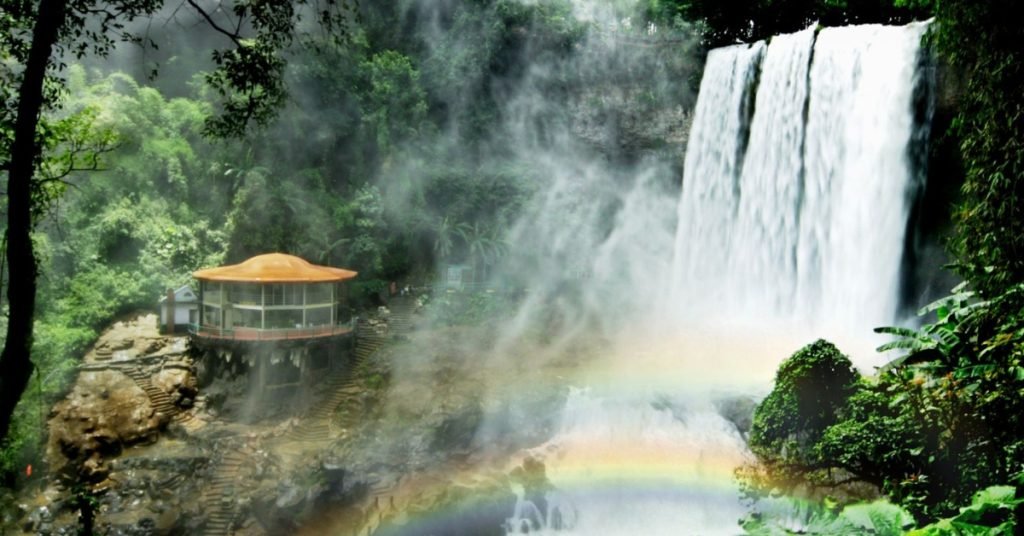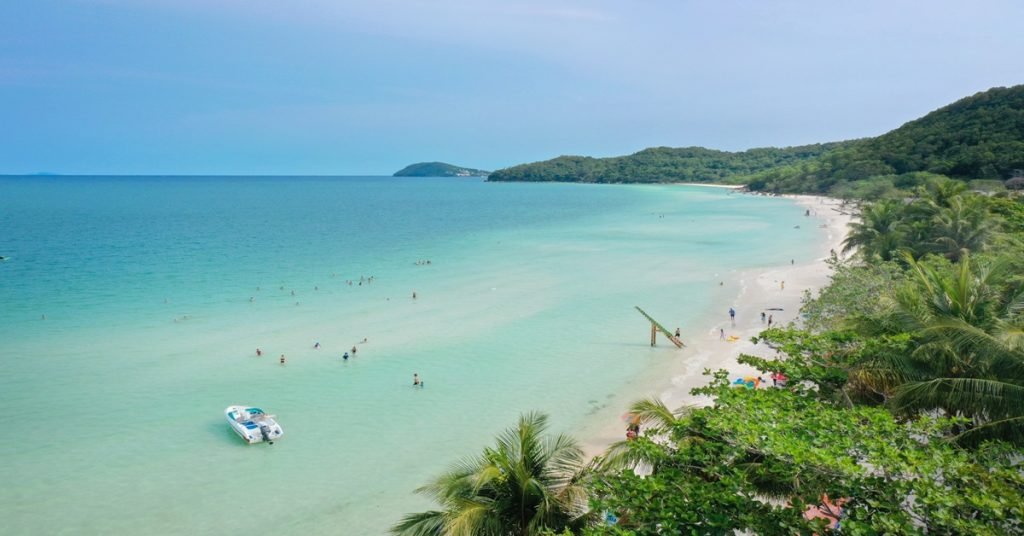The Central Highlands of Vietnam, known as Tây Nguyên, is a region celebrated for its vast highland landscapes, rich biodiversity, and the unique cultures of its indigenous peoples. This guide explores the major attractions and provides essential travel information for Đắk Lắk, Đắk Nông, Gia Lai, Lâm Đồng, and Kon Tum, ensuring you capture the essence and beauty of each province.
Best Time to Visit: November to January when the weather is cool and dry, making it ideal for exploring the outdoor landscapes and cultural activities of the region.
Đắk Lắk
Top Attractions:
- Buôn Ma Thuột (Buôn Ma Thuột): Renowned for its expansive coffee plantations and vibrant coffee culture.
- Dray Sap Waterfall (Thác Dray Sap): A majestic waterfall that’s part of a larger complex including Dray Nur and Gia Long falls.
- Ethnographic Museum (Bảo tàng Dân tộc học Đắk Lắk): Showcases the diverse cultures of the Central Highlands.
- Lak Lake (Hồ Lak): The second largest natural lake in Vietnam, surrounded by lush villages and rolling hills.
Đắk Nông
Top Attractions:
- Tà Đùng National Park (Vườn quốc gia Tà Đùng): Famous for its biodiverse forest and the stunning Tà Đùng lake.
- Gia Long Waterfall (Thác Gia Long): A beautiful and accessible waterfall amidst a lush landscape.
- Đắk Nông Geopark (Công viên Địa chất Đắk Nông): Recognized by UNESCO, featuring unique volcanic rock formations.
- Trúc Lâm Đạo Nguyên Zen Monastery (Thiền viện Trúc Lâm Đạo Nguyên): A serene place for spiritual reflection.
Gia Lai
Top Attractions:
- Pleiku (Pleiku): The capital city, known for its pleasant climate and coffee plantations.
- Biển Hồ (T’Nưng Lake): A volcanic crater lake known locally as the “sea on the mountain.”
- Kon Ka Kinh National Park (Vườn quốc gia Kon Ka Kinh): A UNESCO Biosphere Reserve, great for trekking and wildlife watching.
- Gia Lai Museum (Bảo tàng Gia Lai): Displays artifacts and exhibits related to the ethnic cultures of the region.
- Minh Thanh Pagoda: in is a serene Japanese-style temple known for its beautiful architecture and tranquil gardens.
- Chư Đăng Ya Volcano: a dormant volcano in Gia Lai, Vietnam, is notable for its unique geological structure and the lush vegetation that surrounds its crater, offering picturesque landscapes and a fascinating destination for nature enthusiasts.
Lâm Đồng
Top Attractions:
- Đà Lạt (Đà Lạt): The “City of Eternal Spring,” famous for its temperate weather and floral beauty.
- Lang Biang Mountain (Núi Lang Biang): Offers hiking, views, and adventure sports.
- Trúc Lâm Zen Monastery (Thiền viện Trúc Lâm): A major spiritual site surrounded by pine forests.
- Datanla Waterfall (Thác Datanla): A popular site with a small amusement park and activities like a roller-coaster ride.
- Drambi Waterfall (Thác Drambi): Drambi Waterfall is a picturesque natural site, offering visitors a peaceful escape amidst lush greenery.
- Bát Nhã Monastery (Tu Viện Bát Nhã): Bát Nhã Monastery is a spiritual retreat known for its tranquil setting and practices of mindfulness and meditation.
- Di Đà Temple (Chùa Di Đà): Di Đà Temple is a sacred site revered for its ornate Buddhist architecture and spiritual ambiance.
- Đại Bình Mountain (Núi Đại Bình): Đại Bình Mountain, also known as Big Mountain, is celebrated for its scenic hiking trails and panoramic views of the surrounding landscape.
Kon Tum
Top Attractions:
- Kon Tum Cathedral (Nhà thờ gỗ Kon Tum): An architectural blend of French colonial and Montagnard styles.
- Kon Klor Suspension Bridge (Cầu treo Kon Klor): A gateway to traditional Bahnar villages.
- Ngọc Linh Ginseng Garden (Vườn sâm Ngọc Linh): Conservation area for the valuable Ngọc Linh ginseng.
- Dak To Victory Monument (Đài tưởng niệm Chiến thắng Đăk Tô): Commemorates the significant battles of the Vietnam War.
- Ecotourism destinations Pa Sy waterfall (Khu Du Lịch Thác Pa Sỹ) is an ecotourism destination renowned for its untouched natural beauty, offering visitors a serene environment ideal for relaxation and exploration in the heart of nature.
Getting Around
Traveling in the Central Highlands can be challenging due to the hilly terrain and less developed road infrastructure. Renting a motorbike is often the best way to explore the region thoroughly, allowing access to remote areas and greater flexibility. Local buses are available but may not connect all tourist destinations directly.
Travel Tips
- Climate: The Central Highlands can be cooler than other parts of Vietnam, especially at night, so bring appropriate clothing.
- Health Precautions: As the region is more rural, prepare for limited medical services in remote areas and take precautions against mosquitoes.
- Cultural Sensitivity: When visiting ethnic communities, respect local customs and traditions. It’s often a good idea to engage a local guide who can facilitate interactions and provide insights into the local way of life.
The Central Highlands of Vietnam, known as Tây Nguyên, is a region celebrated for its vast highland landscapes, rich biodiversity, and the unique cultures of its indigenous peoples. This guide explores the major attractions and provides essential travel information for Đắk Lắk, Đắk Nông, Gia Lai, Lâm Đồng, and Kon Tum, ensuring you capture the essence and beauty of each province.
Ethnic Diversity of the Central Highlands
The Central Highlands is home to a diverse array of ethnic groups, each with its own rich traditions, languages, and cultural heritage. Predominantly inhabited by various Montagnard groups, including the Bahnar, Ede, Jarai, K’ho, Mnong, and Rơ Măm, the region is a mosaic of ethnic cultures. These communities are known for their communal longhouses, traditional gong music, and vibrant festivals, which are integral to their cultural identity and social structure.
The people of the Central Highlands have traditionally relied on subsistence farming, with a strong emphasis on the cultivation of coffee, a major economic driver in the region today. Their spiritual life is deeply connected to the land and forest, which are considered sacred. Visitors to the region can learn about the traditional ways of life, witness ceremonial dances, and listen to folk tales that have been passed down through generations.
Understanding and respecting the customs and traditions of these ethnic groups enhances the travel experience, providing deeper insights into the heart and soul of Vietnam’s Central Highlands.
More Experiences
Vung Tau
Vung Tau, a vibrant coastal city in southern Vietnam, is a favored destination for both…
Tien Giang
Gateway to the Mekong Delta Tiền Giang is often the first stop for many travelers…
Phu Quoc Island
The Island Paradise Phú Quốc, the largest island in Vietnam, located in the Gulf of…
Mekong Delta
The Mekong Delta region of Vietnam, with its intricate waterways and rich cultural heritage, offers…







